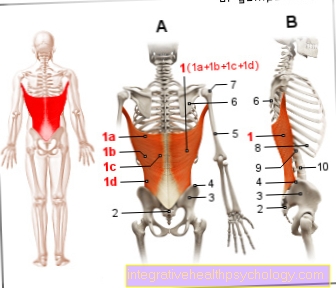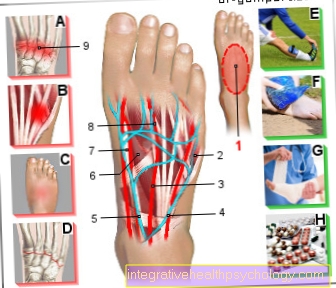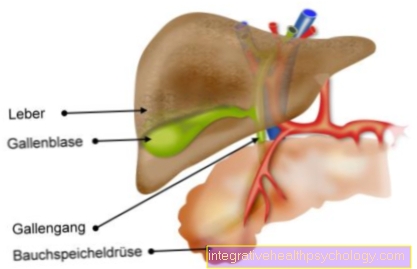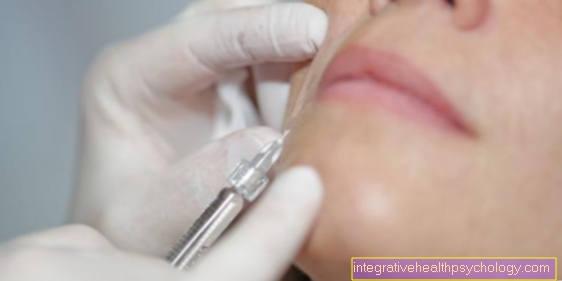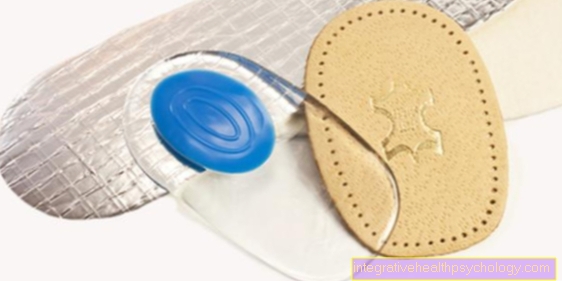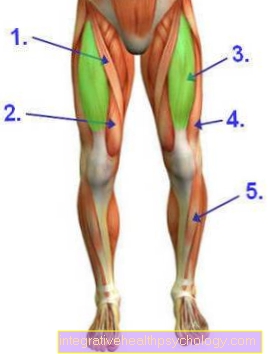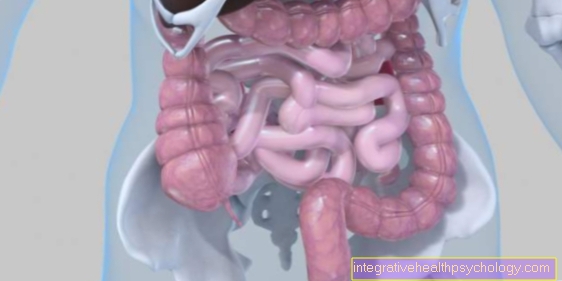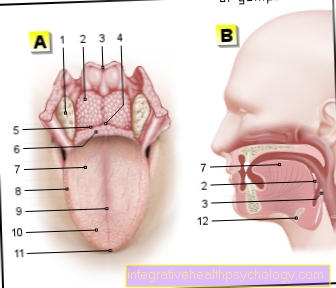The sensory disturbances
What are sensitivity disorders?
A sensitivity disorder is an altered perception of certain stimuli, such as touch, temperature, pressure or vibration, due to a disruption in the transmission of information through one or more nerves. There are different forms; on the one hand, the stimuli can be felt weaker (hypesthesia) or, on the other hand, over-sensitive (hyperesthesia).
A well-known type of sensory disorder is "pins and needles" or tingling (paresthesia), which can also be expressed as a furry feeling. Finally, harmless stimuli can be perceived as uncomfortable or painful.

The reasons
Basically, sensitivity disorders arise from damage or irritation to the nerves and the resulting disruption in the transmission of information. This damage can take place in the peripheral nerves, for example in diabetes mellitus, alcohol addiction, medication or autoimmune diseases.
However, central causes can also damage the nerves, such as in the case of inflammation of the meninges, a herniated disc, a stroke or multiple sclerosis. If you have a sensory disorder, you should see a doctor immediately.
Find out all about the topic here: Herniated disc with nerve damage
The stress as the cause
Acute stressful situations or anxiety states can lead to faster breathing (hyperventilating). This can typically result in a tingling sensation around the mouth and the hands can cramp. These symptoms go away with normal breathing. Long periods of stress are associated with an increased level of cortisone in the blood. This can weaken the immune system so that autoimmune diseases or inflammation, for example, can occur more easily.
There are also patients who have been through stressful situations or trauma in the past and develop a psychosomatic disorder. Those affected react in stressful situations with physical symptoms without suffering from any physical illness. You can develop dissociative sensitivity and sensation disorder.
Read more about the topic here: Consequences of stress.
The cause of multiple sclerosis
Multiple sclerosis is a chronic inflammatory disease of the central nervous system, the cause of which is still unclear. Most of the time, the disease progresses in relapses in which neurological failures occur. These can then recover completely, but residual symptoms persist in the course of the process. Sensitivity disorders in all of their forms are possible for this disorder.
Most of the time, the symptoms come on in bursts and go away after days or weeks. Failures of the eye nerve and paralysis often occur in addition to sensitivity disorders.
Further information on this topic can be found at: Multiple sclerosis.
The stroke as the cause
A circulatory disorder in the brain can cause a sudden, one-sided sensitivity disturbance. Most of the time, it is a matter of a decreased sense of touch (hypesthesia) accompanied by symptoms of paralysis and in some cases speech disorders. However, these accompanying symptoms can also be absent.
Immediate medical attention is required if a stroke is suspected. If a stroke is treated quickly with a special blood thinner, the symptoms can go away completely. In many cases, however, an improvement can only be felt over time.
Find out more about the topic here: The stroke.
The OP as the cause
Small and large nerves can be damaged or irritated during operations. On the one hand, superficial nerves in the area of the incision can be interrupted, causing numbness there. In most cases this recovers in a short time. However, numbness may persist in the area of the scar.
Large nerves can be irritated during the operation, by pressure or by pulling. This can also cause symptoms of failure, but can also recover in the postoperative course. In the worst case, a nerve was cut in the operating room. Then a feeling of numbness and possibly paralysis occurs in the supply area of the nerve. The severing of a nerve cannot heal on its own; it must either be sutured again immediately or replaced with a separate nerve over time.
The polyneuropathy as the cause
Polyneuropathy is the damage to peripheral nerves with impaired sensitivity as a result. In most cases, the underlying disease is diabetes or alcohol addiction, but it can also be due to an autoimmune disease, inflammation, or medication. The abnormal sensations are mostly in the feet and possibly hands, symmetrical and painful.
Tingling and "pins and needles" on the soles of the feet are typical and the reflexes are often reduced. Overall, the patients suffer from impaired perception of all sensitive stimuli, which can also cause a gait disorder.
You can read more about the topic here Polyneuropathy read.
The vitamin B12 deficiency
Vitamin B12 deficiency can cause funicular myelosis, which is associated with severe neurological symptoms. A part of the spinal cord is destroyed by the vitamin deficiency and symmetrical sensitivity disorders of the extremities arise, which can be ascending. Those affected feel numbness, tingling, a decreased sense of vibration, pain and can also have symptoms of paralysis.
People at risk for such a deficiency are patients with intestinal diseases, the elderly, people with malnutrition, pregnant women and newborns, and vegans or vegetarians.
For more information, read on: Vitamin B12 deficiency.
The symptoms
Sensitivity disorders can express themselves in different ways. Often these are described as tingling or "pins and needles", which feel similar to a leg that has fallen asleep (paresthesia). But it can also be a burning sensation (burning feet syndrome) or a furry feeling. Some sufferers complain that it is like cotton wool around their feet.
These abnormal sensations can also be painful and cause an electrifying sensation (dysesthesia). A feeling of numbness (hypesthesia) is also a sensory disorder. Another common symptom is a decreased sense of vibration (pallhypesthesia). Finally, the perception of temperature can also be changed so that temperature differences are no longer correctly perceived. At the same time, the reflexes can be reduced or extinguished. In addition, gait disorders can occur due to the changed perception of the stimuli.
The localization of sensory disorders
The face
Sensitivity disorders in the area of the face can have many causes. Inflammation, multiple sclerosis or a stroke come into question, which is usually accompanied by other symptoms such as paralysis. In the face area, abnormal sensations can also be early symptoms. Parasitic sensations can be the first sign of shingles, which occurs when the chickenpox virus reactivates and is usually followed by blisters, reddening and severe pain.
A sudden hearing loss also often starts with abnormal sensations in the form of a furry feeling on the ear with subsequent painless inner ear hearing loss. As part of a migraine, sensory disturbances can also occur in the face, which precede the headache and last for a maximum of one hour. A medical consultation is useful for every new facial discomfort.
Also read the articles:
- The numbness of the face
- Numbness in the ear - what's behind it?
The foot
The feet are often affected by polyneuropathy. One of the most common causes is diabetes mellitus. The disease typically lasts for years. Symptoms are symmetrical, and the soles of the feet can sometimes develop a burning sensation that gets worse at night. The same symptoms can be found with long-term alcohol consumption.A somewhat rarer disease is solvent-related polyneuropathy, which also shows the same clinical picture, but is directly related to contact with solvents.
Another cause of sensory disorders in the foot could be a herniated disc. Tingling, numbness and shooting pains on one side, which often extend from the lumbar area to the foot, are typical. In some cases, paralysis and reduced reflexes can also occur. Finally, if you have abnormal sensations in your toes and feet, you should think of a possible circulatory disorder (peripheral arterial disease). The main focus here is the pain when moving, but it can also persist during the course of the disease.
The symptoms of a herniated disc? Find out more here.
The finger
One of the most common causes of discomfort in the hand and fingers is carpal tunnel syndrome. In this process, one of the nerves in the wrist that supplies the hand, thumb, index finger and middle finger is constricted. There is nocturnal pain and tingling in the hand, which is often relieved by shaking the hand. In up to 40% of cases this occurs on both sides. There are other bottleneck syndromes, i.e. constrictions of nerves, in the shoulder area and along the arm. These can cause sensory disturbances in the form of tingling and pain, but also paralysis.
Herniated discs can also be responsible for neurological symptoms in the upper extremities. Polyneuropathies can manifest themselves in the hands, usually symmetrically as in the feet. Finally, circulatory disorders in the sense of a severe arterial occlusive disease, but also, for example, in Raynaud's syndrome, can cause discomfort in the fingers.
Read more about the topic here: Numbness in the finger.
The thigh
Sensitivity disorders in the thigh can result from a herniated disc in the area of the lumbar vertebrae 2 to 4. Tingling, numbness, loss of strength and reduced reflexes can occur.
A common cause of numbness and burning pain in the outer thigh is the compression of the nerve for the superficial sensitivity of the thigh (meralgia paraesthetica). These symptoms also belong to the bottleneck syndromes and can have different causes. The most common are obesity, pregnancy, wearing tight pants or belts, and weight training of the thigh or hip.
more on the subject Meralgia paraesthetica you'll find here.
The diagnosis
Sensitivity disorders are primarily recorded on the basis of the description of the person affected and the neurological examination. Here it is particularly important to examine all qualities (sense of touch, temperature, pain and vibration) of sensitivity.
The next step should be to clarify which underlying disease is causing the abnormal sensations. Finally, a neurophysiological examination can differentiate the type of damage. Electoneurography (ENG), in which the conduction velocity of the nerves is measured, and electromyography (EMG) to measure the muscle response are performed.
You can read more information about diagnostic procedures for sensitivity disorders here: Electromyography
The treatment
The cure of a sensory disorder is achieved by treating the underlying disease. Finding the cause and treating the disease are the first steps. Nevertheless, there are also symptomatic therapies, for example in the case of polyneuropathy.
There is the possibility of using antidepressants or anti-epileptic drugs, which work well with paresthesia and pain. Painkillers from the opioid family are also used. Normal pain relievers like ibuprofen or paracetamol will not work well enough for this type of pain. There are also external (topical) therapies such as lidocaine patches or capsaicin ointment.
To assess the effectiveness of one of the therapies you have to adhere to it for up to a month. After about a year you can initiate an attempt to skip therapy. In the event of a compression of the nerve, one can proceed surgically and expose it again, for example in the case of carpal tunnel syndrome or a herniated disc.
The duration
The duration of the sensory disturbances depends heavily on the cause. If the underlying disease is treated well, the abnormal sensations can improve over time. In the case of a stroke or multiple sclerosis, the symptoms can go away completely within a few weeks.
If the nerves are trapped, for example due to a herniated disc, the symptoms can fluctuate. In the case of polyneuropathy, the courses tend to be chronic, but they can be stabilized with good treatment of the underlying disease
Prognosis
In general, one can say that acute events (inflammation, stroke) tend to have better chances of partially or completely recovering. On the other hand, chronic diseases such as diabetes mellitus, autoimmune diseases or long-term alcohol addiction cause permanent consequences.
In the case of peripheral nerve lesions, it depends on the degree of damage, but the nerve can grow back about 1-2mm per day.




